Today’s Current Affairs: 26th June 2024 for UPSC IAS exams, State PSC exams, SSC CGL, State SSC, RRB, Railways, Banking Exam & IBPS, etc
Table of Contents
UP-PRAGATI Accelerator Program:
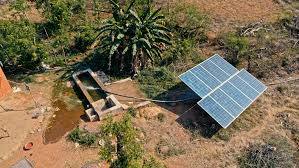
KisanKraft Ltd, an agricultural firm based in Bengaluru, has joined the World Bank’s Water Resource Group’s (WRG) low methane rice project to promote direct seeded rice (DSR) in Uttar Pradesh.
- KisanKraft’s DSR varieties use less water, reduce the need for pesticides and fertilizers, and do not require stagnant water.
- The initiative is part of the UP-PRAGATI Accelerator program aiming to promote DSR cultivation on 250,000 hectares over the next five years, enhancing water efficiency and low-carbon practices.
- The Uttar Pradesh Program for Agricultural Transformation and Increased Incomes (UPPAP) aims to enhance agricultural advancements and boost incomes by promoting water-use efficiency and low-carbon practices through technological and institutional innovations.
- Launched by the Uttar Pradesh Multi-Stakeholder Platform, it is supported by the 2030 Water Resources Group (WRG) and the Bill and Melinda Gates Foundation.
- Low Methane Rice Project (LMRP) is an initiative of the World Bank’s 2030 Water Resources Group (WRG), a multi-donor trust fund hosted by the World Bank Group.
- Direct Seeded Rice is a practice of sowing paddy which involves planting rice seeds directly into the field, instead of the traditional method of growing seedlings in nurseries and then transplanting them into the fields.
Draft Reciprocal Exchange Of Logistics Agreement (RELOS):

Russia has approved a draft logistics agreement with India, ending years of delays.
- Reciprocal Exchange of Logistics Agreement (RELOS) is an administrative arrangement between India and Russia to enhance military cooperation.
- It streamlines military logistics support, making joint operations more efficient and cost-effective.
- Facilitates replenishment of supplies, providing berthing facilities for troops, warships, and aircraft during both wartime and peacetime missions.
- Enables smoother use of host nation’s logistics networks, swift crisis response, and reduces overall mission costs.
- Enhances India’s maritime influence and awareness, and improves information exchange about maritime activities.
- Balances India’s logistics agreements with Quad countries and Russia’s non-Quad stance, countering US and Chinese regional influence.
- Supports India’s Arctic research, focusing on links between Arctic Sea ice melt and Indian monsoon systems
Annual Ambubachi Mela:
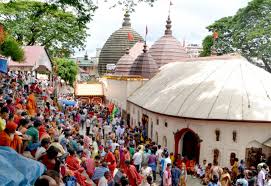
Guwahati’s Kamakhya temple started annual Ambubachi Mela, with festivities underway.
- The Ambubachi Mela is an annual Hindu fair held at the historic Kamakhya Temple in Guwahati.
- It takes place during the monsoon season, specifically in the Assamese month of Ahaar, around the middle of June.
- The festival celebrates the yearly menstruation course of goddess Maa Kamakhya and is also known as Ameti or Tantric fertility festival due to its association with the Tantric Shakti cult prevalent in eastern India. It is managed jointly by the Assam government and the Kamakhya Temple Management Committee
Kamakhya temple:
- It is situated on Nilachal hills (or Kamagiri), and was reconstructed in the mid-16th century by the Koch dynasty after being destroyed by Kala Pahar.
- It is revered as one of the 52 Shakti shrines, where the reproductive organ of Goddess Sati is believed to have fallen.
- The temple is also a significant centre for Tantrik worship, symbolizing the convergence of beliefs and practices between Aryan and non-Aryan communities.
Poori Padhai Desh Ki Bhalai Campaign:

CRY’s seven-week campaign aims to raise awareness and increase girls’ school participation.
- Only 60% of girls are enrolled in higher secondary education, per the Union Education Ministry. Only three out of every five girls in India reach 11th and 12th standards.
- Child Rights and You is an Indian non-governmental organization that works towards ensuring children’s rights.
- The organization was started in 1979 by Rippan Kapur, an Air India purser. CRY works with 99 grassroots projects across 19 states in India and has impacted the lives of over three million children.
Sant Kabir Das Jayanti:

On 22nd June 2024, the Prime Minister commemorated the 647th birth anniversary of Sant Kabir Das.
- Sant Kabir Das, a 15th-century Indian mystic poet and saint, was born in Varanasi, Uttar Pradesh to a Muslim family but was raised by a Hindu weaver couple.
- He was a notable figure in the Bhakti movement, which emphasised devotion and love for the divine.
- The Bhakti movement started in the 7th century in South India and spread to North India during the 14th and 15th centuries.
- Popular poet-saints of the Bhakti movement, like Ramananda and Kabir Das, sang devotional songs in vernacular languages.
- Kabir sought spiritual guidance from teachers such as Ramananda and Sheikh Taqi, shaping his unique philosophy.
- Kabir is revered by both Hindus and Muslims, and his followers are known as “Kabir Panthis.”
- His popular literary works include Kabir Bijak (poems and verses), Kabir Parachai, Sakhi Granth, Adi Granth (Sikh), and Kabir Granthawali (Rajasthan).
- His works, written in the Brajbhasha and Awadhi dialects, significantly influenced Indian literature and the development of the Hindi language.
World Medical And Health Games:

Four Armed Forces Medical Service (AFMS) Officers have made India proud by winning a record 32 Medals in the 43rd World Medical and Health Games held in Saint-Tropez, France.
- The World Medical and Health Games also called the Olympic Games for Health Professionals.
- It is the most prestigious global sporting event within the medical community. The legacy of the World Medical and Health Games dates back to 1978.
- Over 2500 participants from more than 50 different nations participate in this event annually.
- Lt Col Sanjeev Malik, Maj Anish George, Capt Stephen Sebastian, and Capt Dania James, made history by winning 19 Gold Medals, 09 Silver Medals and 04 Bronze Medals at the event.
53rd GST Council Meeting:
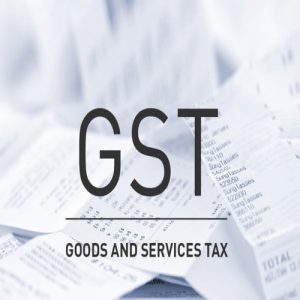
The 53rd meeting of the Goods and Services Tax (GST) Council has approved several measures to ease compliance for small businesses, exempting hostel accommodation, Railway services etc.
- It also agreed to reconvene in August 2024 to discuss restructuring the multiple tax rates under the seven-year GST.
Key Highlights of the 53rd GST Council Meeting:
- The council announced the rollout of biometric-based Aadhaar authentication on a national level to combat fraudulent input tax credit claims made through fake invoices. This is aimed at enhancing tax compliance.
- Hostel accommodation services outside educational institutions are exempt from GST for rents up to Rs 20,000 per person per month, making it more affordable for students and the working class.
- This exemption applies only for stays up to 90 days, whereas previously such rents incurred 12% GST.
- GST exemption on platform tickets, aiming to ease the financial burden on passengers. This decision is part of broader efforts to make railway services more affordable.
- The GST rate on various types of carton boxes was reduced from 18% to 12%. This change is intended to benefit both manufacturers and consumers by lowering the overall cost of these essential packaging materials.
- A uniform GST rate of 12% was announced for all milk cans, regardless of whether they are made of steel, iron, or aluminium.
- The council has recommended waiving interest and penalties for demand notices issued under Section 73 of the GST Act, which applies to cases that do not involve fraud, suppression, or misstatements.
- The GST Council has recommended new monetary thresholds for filing appeals by the department in various courts which are Rs 20 lakh for the GST Appellate Tribunal, Rs 1 crore for High Court, and Rs 2 crore for the Supreme Court for filing appeals by the department.
- The aim is to reduce government litigation.
- The government introduced the ‘Scheme for Special Assistance to States for Capital Investment’, where some loans are conditional on states implementing citizen-centric reforms and capital projects, urging states to meet the criteria to access these loans.
- The central government expressed its intent to bring petrol and diesel under the GST regime, pending consensus among states on the applicable tax rate.
- This is viewed as a step towards uniform taxation of fuel across the country.
International Sugar Organisation:
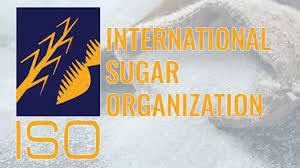
India is hosting a global event in sugar sector ‘International Sugar Organisation (ISO) Council Meeting’ in New Delhi from 25th till 27th June, 2024.
- International Sugar Organisation is an inter-governmental bodycompletely devoted to improving conditions in the world sugar market.
- It was established in 1968 and it is also a UN affiliated body.
- It has about 85 countries as members covering almost 90% of sugar production in the World.
- It is mandated to bring major sugar producing, consuming and trading nations together to bring mutual understanding and progressive approach in dealing with issues pertaining to the sugar sector.
- It has also been working on biofuels, especially ethanol as sugarcane is the second major feedstock for ethanol production in the world.
- The ISO exists to administer the internationally negotiated 1992 International Sugar Agreement (ISA), the objectives of which are:
- To ensure enhanced international cooperation in connection with world sugar matters and related issues.
- To provide a forum for intergovernmental consultations on sugar and on ways to improve the world sugar economy.
- To facilitate trade by collecting and providing information on the world sugar market and other sweeteners.
- To encourage increased demand for sugar, particularly for non-traditional uses.
- Headquarters: London
Lake Natron:
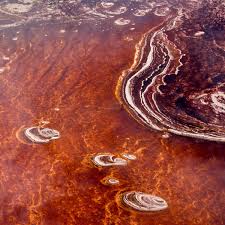
According to experts, the population of flamingos on Lake Natron is steadily declining as fewer birds return each year due to extreme weather and encroachment.
- Lake Natron is a salt lake located on the border between Tanzania and Kenya, part of the eastern branch of the Great Rift Valley.
- It is a Ramsar site and has a unique composition of warm waters and salt, caustic soda, and magnesite deposits that provide ideal conditions for flamingos to thrive.
- The lake is fed by the Ewaso Ng’iro River, which originates from the central region of Kenya.
- One of the most striking features of this Lake is its striking red coloration. The primary reason for its hue lies in its extreme alkalinity.
- Several factors, including agriculture, pollution, and climate change, are threatening the beauty of this unique ecosystem.
Enemy Agents Ordinance:

Jammu and Kashmir Director General of Police (DGP) said those found assisting militants in J&K should be tried by investigating agencies under the Enemy Agents Ordinance, 2005.
- The J&K Enemy Agents Ordinance was first issued in 1917 by the then Dogra Maharaja of J&K.
- It is referred to as an ‘ordinance’ since laws made during the Dogra rule were called ordinances.
- After Partition in 1947, the ordinance was incorporated as a law in the erstwhile state and was also amended.
- In 2019, when Article 370 of the Constitution was repealed, J&K’s legal framework also underwent several changes.
- According to the ordinance, “whosoever is an enemy agent or, with an intent to aid the enemy, conspires with any other person to any act which is designed or likely to give assistance to the enemy or to impede the military or air operations of Indian forces or to endanger life or is guilty of incendiarism shall be punishable with death or rigorous imprisonment for life or with rigorous imprisonment for a term which may extend to 10 years and shall also be liable to fine”.
- Trials are conducted by a special judge who is appointed by the “government in consultation with the High Court”.
- Under the ordinance, the accused cannot engage a lawyer to defend herself unless permitted by the court.
World Craft City:
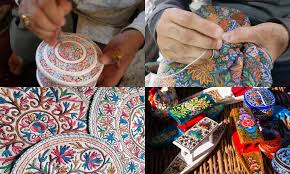
Srinagar has earned the World Craft City (WCC) tag from the World Crafts Council (WCC).
- World Craft City is a groundbreaking initiative launched in 2014 by the World Crafts Council AISBL (WCC-International) in recognition of the pivotal role local authorities, craftspeople, and communities play in cultural, economic, and social development worldwide.
- It establishes a dynamic network of craft cities across the globe, aligning with the principles of the creative economy.
- Under the World Craft City Programme, Jaipur(Rajasthan), Mammalapuram (Tamil Nadu) and Mysore (Karnataka) have been added as craft cities from India.
Vadhavan Port:

The Union Cabinet recently approved the Rs 76,220 crore to Vadhavan Port project in Maharashtra after months of deliberations.
- Vadhavan Port is an approved greenfield deep-sea port in Vadhavan, Palghar District, Maharashtra.
- The port will be developed as an all-weather deep draft major port, which will include the development of core infrastructure, terminals, and other commercial infrastructure in public-private partnership (PPP) mode.
- The project will be constructed by Vadhavan Port Project Limited (VPPL), a special purpose vehicle (SPV) formed by the Jawaharlal Nehru Port Authority (JNPA) and Maharashtra Maritime Board (MMB) with a shareholding of 74% and 26%, respectively.
- The total estimated cost for the project, including land acquisition is Rs. 76,220 crores.
- The port will have nine container terminals, each 1000 meters long, four multipurpose berths, including the coastal berth, four liquid cargo berths, a Ro-Ro berth, and a Coast Guard berth.
- The Project involves the reclamation of 1,448 hectares of area in the sea and the construction of 10.14 km of offshore breakwater and container/cargo storage areas.
- The project will create a cumulative capacity of 298 million metric tons (MMT) per annum including around 23.2 million TEUs (twenty-foot equivalents) of container handling capacity.
- The project will be connected to the Delhi–Mumbai Expresswayvia a link expressway.
- It is expected to serve as a gateway port for the upcoming India-Middle East-Europe Corridor (IMEC) and International North-South Transportation Corridor (INSTC).
- It’s a key project within the Indian government’s Sagarmala initiative to enhance the performance of the country’s logistics sector.
Priority Sector Lending:

The RBI recently revised its priority sector guidelines to encourage banks to provide small loans in economically disadvantaged districts with low average loan sizes.
- Priority Sector Lending (PSL) is a lending requirement administered by the RBI, requiring banks to give a minimum proportion of their loans to sectors of development importance or the sectors that have difficulty of getting loans.
- The RBI is periodically updating the sectors that are eligible to get priority sector lending and the limits of loans.
- Similarly, the regulations identify institutions that are obliged to provide these loans.
- The categories of priority sectors are as follows:
- Agriculture
- Micro, Small, and Medium Enterprises
- Export Credit
- Education
- Housing
- Social Infrastructure
- Renewable Energy
- The targets under PSL:
- Domestic SCBs and foreign banks with 20 branches and above: 40 percent of Adjusted Net Bank Credit (ANBC) or Credit Equivalent Amount of Off-Balance Sheet Exposure (CEOBE), whichever is higher.
- Foreign banks with less than 20 branches: 40 percent of ANBC or CEOBE, whichever is higher; out of which up to 32% can be in the form of lending to exports and not less than 8% can be to any other priority sector.
- Regional Rural Banks and Small Finance Banks: 75 percent of ANBC or CEOBE, whichever is higher.
- Primary (Urban) Co-operative Banks (UCBs): 40 percent of ANBC or CEOBE, whichever is higher, which shall be increased to 75 percent of ANBC or CEOBE, whichever is higher, with effect from FY2025-26.
Javelin Anti-Tank Missile:

India and the US recently held discussions on the co-production of American javelin missiles in India to meet the requirements of the Indian military.
- Javelin Anti-Tank Missile is a man-portable antitank guided missile (ATGM) system.
- It is developed and produced jointly by American defence majors Raytheon and Lockheed Martin.
- It was designed to defeat heavily armored vehicles, such as main battle tanks and lighter-skinned military vehicles.
- The weapon also has capability against other target types, like fortifications, bunkers, and helicopters.
- It first entered service with the S. military in 1996.
- It measures roughly 1.2 m in length, 127 mm in diameter, and weighs 22.1 kg.
- The missile carries a single 8.4 kg tandem-charge, high-explosive antitank (HEAT) warhead.
- It has a qualified maximum range of 2,500.
- It uses “fire-and-forget” technology using automatic infrared guidance to guide itself to the target without external commands or target designation.
- It is designed to be shoulder-fired but may alternatively be mounted on wheeled or tracked vehicles.
- It can be used in direct attack mode to destroy a target or, if fired upwards, to shoot down a low-flying aircraft such as a helicopter.
- Its reload and reacquire time takes around one minute.




